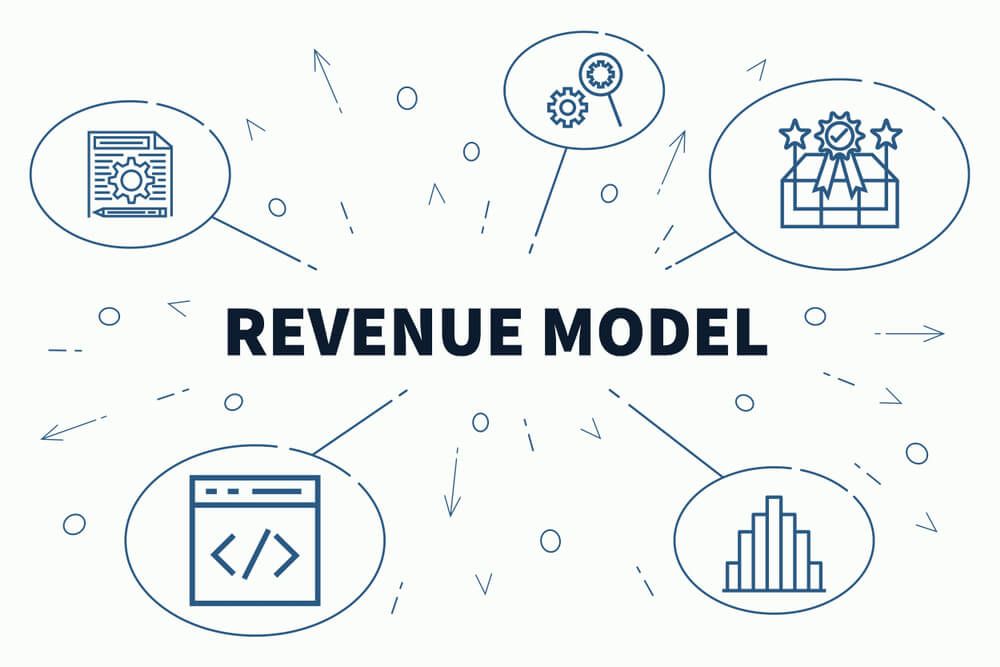Choosing the right revenue model is one of the most critical decisions for any Indian startup. It’s not just about how you make money—it’s about long-term sustainability, scalability, and the potential to attract investors.
In India’s fast-evolving startup ecosystem, a clear monetization strategy can be the difference between rapid growth and early shutdown. Whether you’re building a SaaS platform, launching a D2C brand, or starting a marketplace, the right revenue model sets the foundation for your success.
Here are the top 10 revenue models every Indian startup should consider in 2025.
1. Subscription Model
In this model, customers pay a recurring fee (monthly or annually) to access a product or service. It works well for SaaS startups, content platforms, and online learning portals.
Best suited for: SaaS companies, edtech platforms, media streaming services
Example: Zoho, Unacademy Plus, Freshworks
Benefits: Predictable recurring revenue, high customer lifetime value
2. Freemium Model
Offer a basic version of your product for free, while charging users to unlock premium features or services. This model is effective for quickly building a user base while gradually converting users into paying customers.
Best suited for: AI tools, productivity apps, consumer tech platforms
Example: KukuFM, Grammarly, Canva
Benefits: Lower user acquisition cost, easy upselling opportunities
3. Commission-Based Model
The platform charges a fee or percentage for facilitating transactions between two parties. It’s commonly used by marketplaces and service aggregators.
Best suited for: Marketplaces, gig economy platforms, B2B services
Example: Flipkart, Swiggy, UrbanClap
Benefits: Scales with volume, low upfront cost for users
4. Ad-Based Model
Revenue is generated by displaying ads or sponsored content to users. This model is ideal for platforms with high traffic and engagement.
Best suited for: News portals, free mobile apps, video streaming platforms
Example: Inshorts, Dailyhunt, TVF
Benefits: Free access for users, scalable with audience growth
5. Licensing Model
Charge clients a fee for using your software, technology, or intellectual property. This model is common among B2B tech companies and product innovators.
Best suited for: Enterprise SaaS, AI/ML companies, IP-heavy startups
Example: Pixis, Entropik Tech
Benefits: High margins, recurring contracts, strong IP valuation
6. Affiliate Marketing
Earn a commission by referring customers to third-party products or services. It requires building trust and an engaged audience.
Best suited for: Content creators, bloggers, price comparison sites
Example: CashKaro, CouponsDunia
Benefits: Low operational costs, passive income stream
7. Direct Sales (D2C Model)
Products are sold directly to consumers via owned e-commerce channels, cutting out intermediaries and improving margins.
Best suited for: D2C brands, lifestyle and FMCG startups
Example: Mamaearth, boAt, Sleepy Owl
Benefits: Control over branding, customer experience, and pricing
8. Data Monetization
Companies monetize anonymized or aggregated data by selling insights, analytics, or trend reports to third parties.
Best suited for: Fintech, logistics, healthtech
Example: Razorpay, CureSkin
Benefits: High-value B2B opportunities, scalable with user base
9. Pay-As-You-Go
Users pay based on usage volume rather than a fixed rate. This model offers transparency and flexibility, especially for startups serving a wide range of customers.
Best suited for: APIs, cloud services, IoT platforms
Example: Postman, Airtel IoT
Benefits: Attractive for SMEs and enterprises, encourages user adoption
10. Crowdsourcing and Donations
Fund your business through community contributions, especially when offering impact-driven or creative services.
Best suited for: Social impact startups, creators, open-source platforms
Example: Ketto, BitGiving
Benefits: Community support, flexible fundraising options
Choosing the Right Revenue Model
Your ideal revenue model depends on the nature of your product, the behavior of your target audience, and your long-term goals. Some startups begin with one model and pivot later. Others combine multiple models for diversified income streams, such as combining subscription with ads or D2C with affiliate marketing.
Cred is a prime example of an Indian startup that evolved its model—from a rewards app to a high-end financial and commerce ecosystem.
Build a Revenue-Ready Startup with FounderLabs
At FounderLabs, we help Indian startups find the right revenue model for their business and validate it using real user insights, market data, and strategic guidance.
We support founders with:
-
Revenue model consulting and validation
-
Business model testing with early adopters
-
Investor-ready monetization strategies
Don’t just build a product—build a business.
Join FounderLabs today to get the latest insights on how to create a scaled revenue engine.
